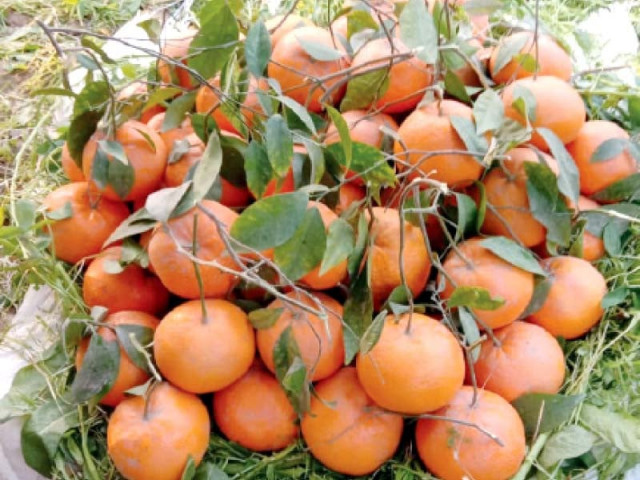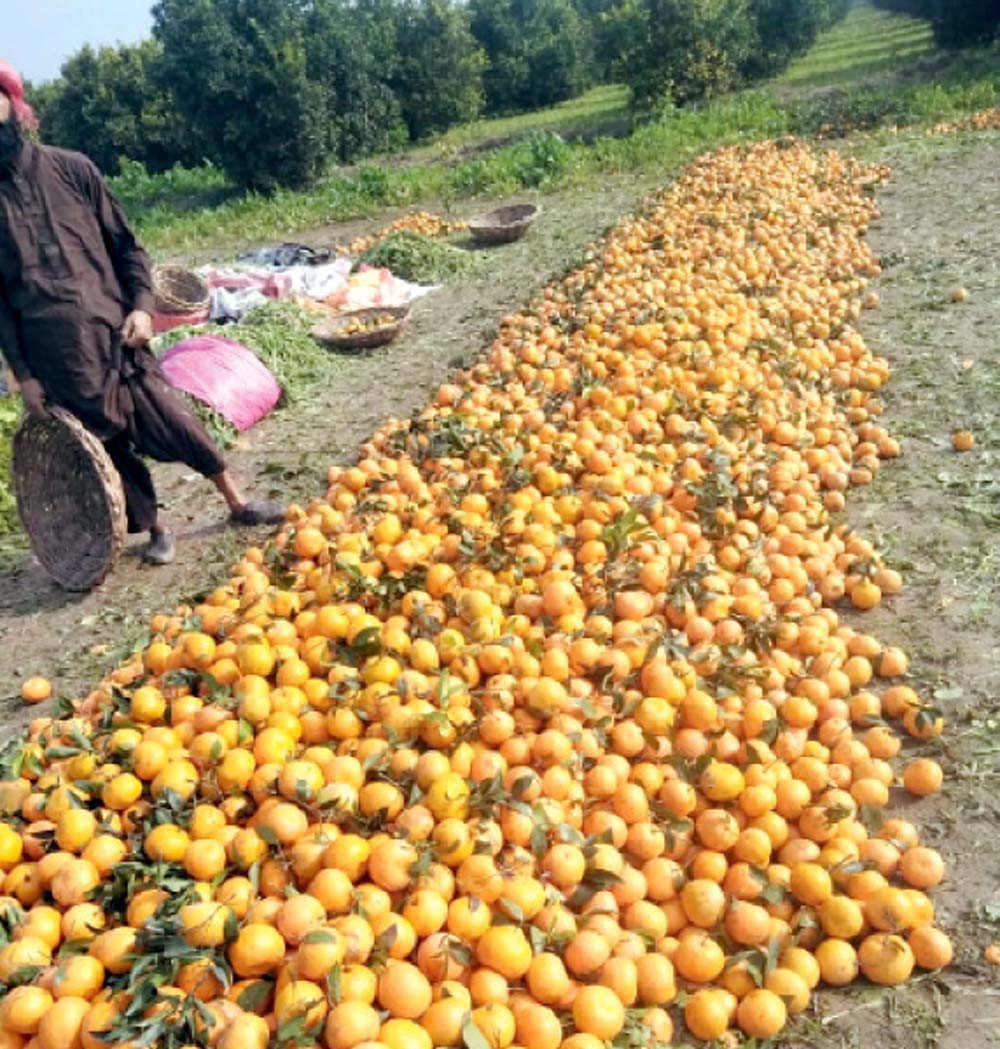Growers pin hopes on kinnow export
Dozens of orchards of kinnow and other fruits cover about 80% area of 31 villages

A large quantity of kinnow is sent to markets across the country every year from orchards in Chichawatni, the second highest producing area of the fruit after Sargodha.
The country can benefit immensely from increasing consumption of kinnow in the world because of its taste and nutritional benefits because of being rich in vitamin C.
The Pakistani variety of the fruit is famous abroad for its unique taste and aroma, leading to an increasing demand. The environment and climate of the region are very favourable for the growing kinnow.
Local growers say substantial foreign exchange can be earned by formulating strategies to increase access of the country's kinnow to the global market. This will also make the local farmers prosperous.

Sargodha and Toba Tek Singh districts are two major hubs of kinnow production in the country.
In the early 19th century, the area of Chichawatni tehsil was known as Ganji Bar, spread over hundreds of miles consisting mostly of small forests, shrubs and trees with poisonous insects and wild animals found in large numbers. The British government decided on start settlement of people in the area, which began in 1914 and initially Indian soldiers serving in the British army were allotted land here as reward.
A family from the Waraich community of Sargodha grew the first orchard of kinnow in Chichawatni in village 116/12L.
Later, they also set up the only commercial nursery providing kinnow plants across the tehsil for a long period.
Now, not only are orchards of kinnow flourishing on more than 70 per cent of the agricultural land in the nearby five villages, but the trend is spreading to other areas as well.
Chichawatni is a major contributor to the country's agricultural production. The local farmers grow a number of seasonal fruits and vegetables, as well as sugarcane, maize, cotton and wheat.
Big landowners of all the villages in the tehsil have planted guava, mango and kinnow, but the Okanwala Bungalow area is most prominent among them for kinnow production.
Dozens of small and large orchards of kinnow and other fruits cover about 80% area of 31 villages of the locality.
With proper care, the kinnow plant usually starts producing the fruit after three years. The yield per acre is more than four maunds in suitable climate and environment.
However, agricultural experts have warned that the production of kinnow is likely to be severely affected by unfavorable weather conditions and lack of timely rains this year.
They said the production might drop by up to 40%.

There are two types of kinnow grown in Chichawatni, named super and special. A bag of 50 'super' kinnows is selling for Rs400 on average, while a bag of the 'special' variety costs Rs1,000. Hundreds of tons of kinnow are sent to markets across the country every year from the orchards in Chichawatni.
Muhammad Sharif, the owner of a 12-and-a-half acre garden in the Okanwala area, told The Express Tribune that the said that the kinnow orchards had been severely damaged by poisonous flies.
Published in The Express Tribune, January 18th, 2022.



















COMMENTS
Comments are moderated and generally will be posted if they are on-topic and not abusive.
For more information, please see our Comments FAQ